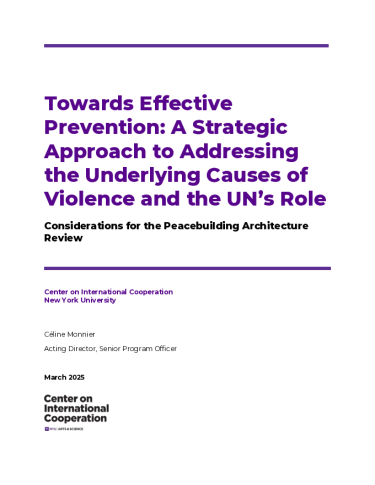Understanding the impact of prevention efforts is a key focus of this year’s Peacebuilding Architecture Review (PBAR). However, measuring this impact has historically been challenging, particularly due to the difficulty of assessing what did not happen (e.g., the outbreak of conflict or violence).
This paper outlines an approach pioneered with support from NYU’s Center on International Cooperation (CIC) by developing an analytical tool for practitioners and decision-makers.
- The first section examines how measuring changes in risk and protective factors can help national actors assess their vulnerabilities and strengths.
- It then explores how member states, through the PBAR, can enhance the United Nation (UN) peacebuilding architecture to better support national and local actors in identifying and addressing these factors. In particular, integrating this risk and protective factors approach into national prevention strategies can be critical in ensuring their effectiveness.
This policy brief is part of the Preventing Armed Violence tool‘s analysis series.






